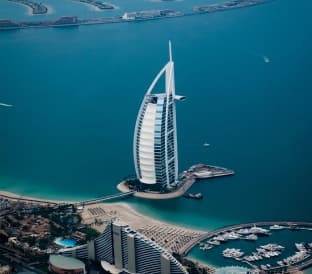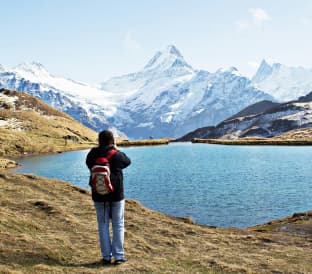Are you planning to Climb Mount Kilimanjaro Mountain or to Visit Tanzania for a Safari? You are in the right place. We are Experts in Tanzania Safaris and are ready to help you plan the best Kilimanjaro trip or Tanzania Safari. Our website provides a complete Guide to Kilimanjaro and all your questions will be answered here such as: Climb Kilimanjaro cost, Kilimanjaro routes, Kilimanjaro location, Best month time to climb Kilimanjaro, Mount Kilimanjaro Peak, Packing list for Kilimanjaro trek.
We have several Mount Kilimanjaro tours and Tanzania holidays. You can choose to only Hike Kilimanjaro or Combine your Kilimanjaro trek with a safari or beach holiday and we also have stand alone Tanzania Safari tours.


A Tanzania safari is an unforgettable adventure, offering breathtaking landscapes and unparalleled wildlife experiences. From highest point in Africa, the Mount Kilimanjaro to the vast plains of the Serengeti, home to the Great Migration, and the wildlife-rich Ngorongoro Crater, Tanzania boasts some of Africa’s most iconic safari destinations. Visitors can witness the Big Five—lion, elephant, buffalo, leopard, and rhino—alongside cheetahs, giraffes, and vast herds of wildebeest and zebras. Whether exploring the savannah on a 4×4 game drive, floating above in a hot air balloon, or experiencing a walking safari, Tanzania offers diverse ways to connect with nature. With options ranging from budget camping to luxurious lodges, a safari in Tanzania is a bucket-list experience for any traveler seeking adventure and breathtaking wildlife encounters.




Lorem ipsum dolor sit amet, consectetur adipiscing elit, sed do eiusmod tempor incididunt ut labore et dolore magna aliqua.







Mount Kilimanjaro is located in Tanzania, East Africa, near the Kenya-Tanzania border. It is the highest mountain in Africa, standing at 5,895 meters (19,341 feet) above sea level. Situated within Kilimanjaro National Park, the mountain is a free-standing volcanic peak, making it one of the world’s most iconic trekking destinations. Its location near the equator means climbers experience diverse climates, from tropical rainforests at the base to arctic conditions at the summit. The nearest major town is Moshi, which serves as the gateway for climbers preparing to take on this legendary adventure.
Packing for a Kilimanjaro hike requires careful planning to handle the mountain’s varied climates, from humid rainforests to freezing summit conditions. Essential items include layered clothing, such as a moisture-wicking base layer, insulating mid-layer, and waterproof outer shell, along with thermal gloves, a hat, and a down jacket for the cold. Sturdy hiking boots, trekking poles, and gaiters are crucial for stability and protection. A sleeping bag (rated for -10°C/14°F or lower), headlamp, and sunglasses are also necessary. Bring a hydration system (CamelBak or water bottles), high-energy snacks, and personal medications like Diamox for altitude sickness. Don’t forget sunscreen, lip balm, and a light backpack for daily essentials, while porters carry your main gear.
The best time to climb Mount Kilimanjaro is during the dry seasons, which occur from January to early March and from June to October. These periods offer the most stable weather conditions, with clear skies, lower chances of rain, and milder temperatures, making the trek more enjoyable and increasing the chances of reaching the summit successfully. January and February are slightly warmer, while June to October coincides with peak trekking season due to favorable conditions. Avoid the long rainy season from March to May and the short rainy season in November, as trails can be muddy and visibility reduced.
Mount Kilimanjaro has seven hiking routes, each offering unique challenges and scenery. The Marangu Route (Coca-Cola Route) is the only one with hut accommodations and is considered the easiest, though it has a lower success rate due to rapid ascent. The Machame Route (Whiskey Route) is more scenic and challenging, with better acclimatization. The Lemosho Route is one of the most beautiful, offering excellent acclimatization and high success rates. The Rongai Route, approaching from the north, is drier and less crowded, making it ideal during the rainy season. The Shira Route is similar to Lemosho but starts at a higher altitude, posing acclimatization challenges. The Northern Circuit Route is the longest and most gradual, providing the best acclimatization and highest success rate. Lastly, the Umbwe Route is the steepest and most difficult, recommended only for experienced climbers.
Acclimatization is crucial when climbing Mount Kilimanjaro to avoid altitude sickness, which can range from mild headaches to severe, life-threatening conditions like HAPE (High-Altitude Pulmonary Edema) and HACE (High-Altitude Cerebral Edema). To acclimatize properly, climbers should choose longer routes like Lemosho, Machame, or the Northern Circuit, which allow gradual ascent and better adaptation. Following the “climb high, sleep low” principle helps the body adjust to lower oxygen levels. Staying hydrated, moving at a slow and steady pace, and avoiding alcohol and heavy exertion can reduce symptoms. Diamox (Acetazolamide) is sometimes used to help with acclimatization, but it should be taken under medical guidance. If symptoms worsen, descending immediately is the best course of action. Proper acclimatization increases summit success rates and ensures a safer climb.
The cost of hiking Mount Kilimanjaro varies depending on the route, tour operator, group size, and level of service. On average, the cost ranges from $1,500 to $6,000 per person. Budget operators offer treks starting around $1,500 to $2,500, but these may have fewer amenities and lower-quality gear. Mid-range operators charge between $2,500 and $4,000, providing better guides, food, and equipment. Luxury climbs can cost $4,000 to $6,000+, offering premium services such as private tents, gourmet meals, and portable toilets. Additional expenses include flights to Tanzania ($800–$1,500), visas ($50–$100), travel insurance, gear, and tips for guides and porters ($200–$300). Choosing a reputable operator ensures safety, ethical treatment of porters, and a higher chance of a successful summit.
The time it takes to climb Mount Kilimanjaro varies depending on the route chosen and the climber’s acclimatization needs. The shortest possible trek is 5 days (Marangu or Umbwe Route), but this has a lower success rate due to rapid ascent. Most climbers take 6 to 8 days on routes like Machame, Lemosho, or Rongai, which allow better acclimatization and increase the chances of reaching the summit. The Northern Circuit Route is the longest, taking 9 to 10 days, offering the best acclimatization and highest success rate. A longer trek improves adaptation to altitude and reduces the risk of altitude sickness, making for a safer and more enjoyable climb.

